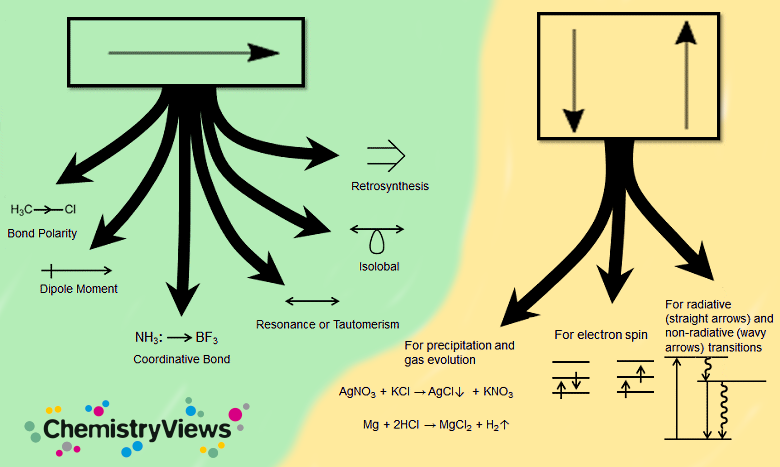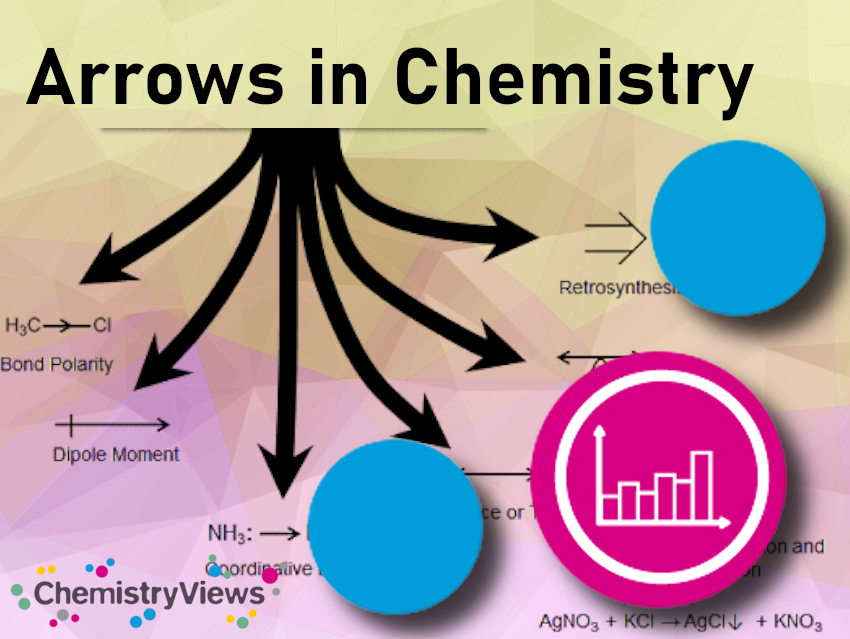The arrow is used in almost every field of human activity, from prehistoric cave paintings depicting hunting scenes to traffic signs. In chemistry, arrows have played a variety of roles and the exact meaning of each type of arrow used has evolved with our understanding of substances, reactivity, and structure.
Arrows in Alchemy Symbols

Alchemists and early chemists used a range of symbols to represent substances. Among them, an arrow and a circle were commonly used for iron-based compounds. The adoption of alphabetical atomic symbols rendered these obsolete.
Timeline of Modern Usage of Arrows in Chemistry

Range and Meaning of Modern Arrows in Chemistry

ar·row n. 1. a slender, straight, generally pointed missile or weapon made to be shot from a bow and equipped with feathers at the end of the shaft near the nock, for controlling flight. 2. anything resembling an arrow in form, function, or character. 3. a linear figure having a wedge-shaped end, used in maps, architectural drawings, etc., to indicate direction or placement.[1]
- Straight as an Arrow
An Essay in Angewandte Chemie outlines the many uses of arrows in chemical symbolism and how this is connected to art - Chemistry: A Panoply of Arrows,
Santiago Alvarez,
Angew. Chem. Int. Ed. 2012, 51(3), 590–600.
DOI: 10.1002/anie.201101767 - All Clever Pictures
[1] Websters Encyclopedic Unabridged Dictionary of the English Language, Gramercy Books, New York, USA, 1996.


